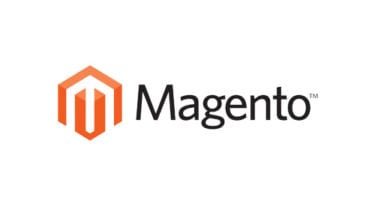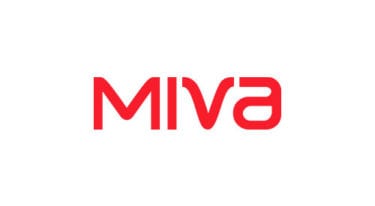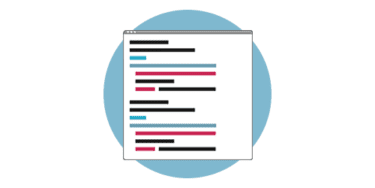Starting an ecommerce store is exciting, and when your site starts to build a large audience and converting, it’s time to think about expanding your brand – and your ecommerce tech stack. The phrase tech stack can sound a little intimidating, especially to ecommerce and marketing professionals who haven’t spent a lot of time in the software or tech world. However, even if this isn’t a term you use, the chances that you’re already using a tech stack are 100%.
Some people are super familiar with tech stacks, some kind of know what it means but don’t use it enough to be confident in their definition, and some people have never even heard of it. Wherever you fall on this spectrum, we’re here to break it all down. We’re also here to guide you in what technology you need to run an ecommerce site, how to know when you need more to your tech stack, how to choose the right solutions, and more.
What is an Ecommerce Tech Stack?
The first thing we need to talk about is basic but incredibly important. We need to define an ecommerce tech stack. In the simplest terms, an ecommerce tech stack is all the technology and software used to make your online store work. Essentially, it’s all the tools and technology used across teams that make operations run.
Ecommerce tech stacks are made up of two main parts: A customer-facing side (the front end) and a server-facing side (the back end).
Think of your online store like a play. The front end are the choreographer, director, musicians, and actors who work for months to create an experience that the audience connects with. They make sure the show looks good, makes sense, flows well, and that the audience (in this metaphor, “the audience” is shoppers on your site) is enjoying themselves. The back end are techies who work before opening night to build sets, determine needs, create lighting and sound sequences, and develop plans for a smooth run. During shows, they’re backstage running cues, moving sets, and making sure the actors (the front end) have everything they need to do what they need to do.
The front end is anything a user sees. Front end developers ensure that shoppers can easily interact with your site. They do this through various programming languages and design. These are the folks who make your site looks good.
The back end is everything that goes on behind the scenes. This is stuff shoppers never see, but it’s where your ecommerce site is built and functions. Back end developers use programming languages to create site operations and applications. They are also who we trust to store and organize data (like product and customer info, shopper behavior, and insights).
The Front End Includes:
- Cascading Style Sheets (CSS)
- HTML
- JavaScript
- Framework
The Back End Includes:
- Databases
- Operating Systems
- Programming Languages
- Web Framework
- Servers
- Storage
Go Headless
Although there are two separate parts to an ecommerce tech stack, they are like best friends in a group chat: always talking to each other. While traditional tech stacks are completely connected, there is also the option to go headless. No, we’re not talking about a scene from The Walking Dead or conjuring up the Headless Horseman. This kind of headless is when the front end is taken apart from the back end so that one no longer depends on the other. Going headless makes it easier for back end developers to make changes and updates to your ecommerce site. It also makes it easier to create customizations and implement ecommerce personalization.
Pros of Headless:
- Vendor Flexibility
- Improved Site Speed
- Make Fast Decisions – React in Real Time
- Streamlined Workflows
Cons of Headless:
- Requires Development
- Temptation to Add Plugin’s and Apps (and while they look nice at first, add too many and they’ll slow down your site)
What Technology Do You Need to Run an Ecommerce Site?
So now that we’ve gotten the complicated stuff out of the way, let’s dive into what growing ecommerce sites need to increase sales and reach their goals.
Ecommerce Platform
The first thing you need is obviously a platform to build your online store on. Most ecommerce platforms are easy to use and do not require coding. Of course, as your site grows, you will require more powerful solutions that fit your needs better (but we’ll get back to this later).
- Shopify / ShopifyPlus – With this popular platform, merchants can make an online store in minutes. It’s also easy to manage Shopify sites and integrate with thousands of applications that improve the shopper experience. While Shopify is great on it’s own, growing ecommerce sites find great value by investing in some of these options.
- Magento (Adobe Commerce) – Magento is a free, open source ecommerce platform. Magento differs from other options listed here because some coding is required. However, this gives way for more customization since you don’t need to stick to templates. Just like with Shopify, Magento offers amazing third-party apps that work with the platform to create a better experience and streamline processes.
- BigCommerce – Merchants on BigCommerce enjoy a plethora of features included in their plan. No coding required make this an easy to use and manage platform as well. BigCommerce retailers also have the ability to increase conversions with thousands of SaaS integrations available.
- Miva – Miva is super easy to use and has features that help make your online store shine. Easy install of third-party services are another perk since these apps lead to bigger carts and make your team more nimble.
- Custom Platforms – There is always the option to create your own ecommerce website. With this option, you can pick and choose exactly how you want your site to look and function. However, custom platforms require extensive coding experience so they’re not feasible for everyone. The good news is, even retailers with custom ecommerce sites can take advantage of thousands of applications to help them reach their sales and growth goals.
More Ecommerce Tech Stack Needs
-
Product Information Management (PIM)
Centralize product information and data with a PIM solution. PIM’s help ensure accurate product information is shared across channels.
-
Digital Asset Management
Make organizing and sharing digital assets easier with a Digital Asset Management tool.
-
Reviews and Listing Management
Listing and review sites can be tough to keep up with. However, they are vital for ecommerce success. Simplify the process and tracking with Review and Listing Management services.
-
Enterprise Resource Planning
Enterprise Resource Planning solutions are kind of like the brain of your business. This type of software organizes day-to-day operations and analyzes data for smart decision making.
-
Payment Processing
Some ecommerce platforms have payment processing built in, some don’t. Either way, you’re gonna need to process payments on your ecommerce site, so this application is non-negotiable.
-
Shipping / Inventory / Order Management
There are many options for ecommerce merchants to manage shipping, inventory, and order management needs. As sites grow, management of these pieces becomes more complex, so it’s important to invest in a solution.
-
Email Marketing
Every marketer will tell you the importance of email communication. It’s absolutely required to nurture relationships and build customer loyalty. There are many cheap and free options for those building their biz, but for those who require a more sophisticated email solution, invest in one that personalizes for higher conversion rates and to deliver a better shopper experience.
-
SMS Marketing
You know those texts you get with a coupon code from retailers? Yeah, you’re gonna want those. SMS marketing helps drive conversions and uncovers your most loyal customer base.
-
Design Tools
Invest in tools like the Adobe Design Suite to create professional, optimized, eye-catching product images, social media assets, video, and advertising. If you don’t have a graphic designer on board, consider using a marketing agency or software like Canva.
-
Social Media Management / Marketing
Social Media should be integrated as part of your omni-channel planning. You can’t build an ecommerce site without a social media plan. Hire a Social Media Manager and invest in social media management tools for maximum engagement (and higher conversion).
-
Customer Support Platform and Customer Relationship Management (CRM)
Shoppers need to feel taken care of. Make sure you have customer support in place with software that streamlines and manages tickets, calls, emails, and tracking. A CRM helps deliver great customer support.
-
Search, Personalization, and Merchandising Solutions
Some ecommerce platforms have built in solutions for search, personalization, and merchandising, but they usually need a little help.
-
- Search – Relevant search results increase conversions by 4x. Get an advanced search solution to optimize results
- Personalization – Personalization includes everything from product recommendations to search results. Yes, native ecommerce platforms offer blanket recs (the same products recommended for everyone), but that is not a truly personalized experience. Shoppers today expect experiences tailored especially for them, and by accommodating this, your conversions will reach new highs.
- Merchandsing – With merchandising tools, you can customize filters, create your own category pages and campaigns, and automate processes with features like boost rules, inline banners, and and geo-merchanding. Merchandising your online store is essential to getting relevant products in front of shoppers and increasing AOV.
-
Reporting and Analytics Tools / Google Analytics
Reporting and analytics are essential to planning, purchasing, and inventory management. Invest in reporting and insights tools and utilize Google Analytics to analyze what shoppers look for, what products are trending, where your visitors are coming from, and to identify gaps in the customer journey. Some analytics tools connect with Google Analytics so reporting is all in one place and easier to access and read.
-
Checkout and Cart Tools
Checkout and shopping cart functions are typically available through your native ecommerce platform, but they may need a little boost from a third-party app to really fit your needs and make the checkout process seamless.
-
Mobile App
Becoming more and more essential is a mobile app for your ecommerce store. In fact, if you don’t have one, you might be behind the game. Mobile apps require special coding and development, so invest in a third-party that can help you design your app and get it up and running.
How Do You Know When You Need to Add More to Your Tech Stack?
As your ecommerce site grows, so will your tech stack needs. The bigger the site, the bigger the stack. As you start out, your native ecommerce platform and simple design and marketing efforts may be enough, but after time, you will outgrow the basics and need to invest in more sophisticated software.
When you add technology is up to you and there will be obvious signs. For example, if your inventory becomes too large for your team to manage, it’s time to invest in some software to help streamline processes. When you start to notice that shoppers are bouncing due to no results or irrelevant products displaying, you need to invest in search, merchandising, and personalization solutions.
How Do You Choose Software and Technology for Your Online Store?
When choosing technology for your ecommerce brand, think about your immediate goals and what will be needed in the future. How will your store look a year from now? 5 years from now? What do you want to achieve in that time. In order for your business to grow, it’s important to invest in tools that will help you do that for long-term success.
Consider the following when forming your ecommerce tech stack:
-
Budget
This is a big one. While you may want to get as much as you can for added effeciency, it might not be possible right away. Consider what is most needed to meet your short-term goals and grow and add on from there. Where is your team struggling? What gaps are you noticing? Use your budget smartly, consider ROI and, with the higher conversion rates and savings from creating a more agile team and streamlined processes, you’ll be able to add more in no time.
-
Scalability
Pick technology that supports your online store as it grows. Make sure it doesn’t limit you and is something you can stick with long-term.
-
Usability
Is the tool or solution bulky, complex, and requires extensive training? If so, consider something else. Grow productivity by investing in a solution that is intuitive and supports your success.
-
Customer Impact
If the customer isn’t benefiting from the technology, what’s the point? Always have the end user in mind and think about how each application will impact shoppers to your site. If it speeds up shipping time and adds value, it’s completely worth it.
-
Integration and Partnerships
Does the application play well with your site and other applications on your site? Make sure each solution works with each other to avoid issues. For example, when looking at a search, merchandising, and recommendations platform, does it have partnerships with customer service applications, reviews platforms, and other solutions essential to your tech stack?
-
Long-Term Value
Ensure the tech matches up with your long-term goals. Finding a solution that grows with you will have the most impact.
-
Experience
Read up on reviews, about us, FAQ, customer success stories, and social media. In other words, do your research. Are other clients happy? Do they provide value? This will help determine the best solution for your store.
What Else Do You Need to Think About?
At the end of the day, an ecommerce tech stack is the software and technology you invest in to make your life easier and help your online store grow. While it can get complex, there are solutions that genuinely want to help you succeed and offer support all along the way. Find tech partners that are just as invested in you as you are in them and watch the conversions roll in.








